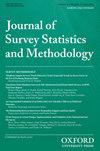Improving the Efficiency of Outbound CATI As a Nonresponse Follow-Up Mode in Address-Based Samples: A Quasi-Experimental Evaluation of a Dynamic Adaptive Design
IF 1.6
4区 数学
Q2 SOCIAL SCIENCES, MATHEMATICAL METHODS
引用次数: 0
Abstract
This article evaluates the use of dynamic adaptive design methods to target outbound computer-assisted telephone interviewing (CATI) in the California Health Interview Survey (CHIS). CHIS is a large-scale, annual study that uses an address-based sample (ABS) with push-to-Web mailings, followed by outbound CATI follow-up for addresses with appended phone numbers. CHIS 2022 implemented a dynamic adaptive design in which predictive models were used to end dialing early for some cases. For addresses that received outbound CATI follow-up, dialing was paused after three calls. A response propensity (RP) model was applied to predict the probability that the address would respond to continued dialing, based on the outcomes of the first three calls. Low-RP addresses were permanently retired with no additional dialing, while the rest continued through six or more attempts. We use a difference-in-difference design to evaluate the effect of the adaptive design on calling effort, completion rates, and the demographic composition of respondents. We find that the adaptive design reduced the mean number of calls per sampled unit by about 14 percent (relative to a modeled no-adaptive-design counterfactual) with a minimal reduction in the completion rate and no strong evidence of changes in the prevalence of target demographics. This suggests that RP modeling can meaningfully distinguish between ABS sample units for which additional dialing is and is not productive, helping to control outbound dialing costs without compromising sample representativeness.提高外呼 CATI 作为基于地址样本的无应答随访模式的效率:动态自适应设计的准实验评估
本文评估了在加利福尼亚州健康访谈调查 (CHIS) 中使用动态自适应设计方法针对外呼计算机辅助电话访谈 (CATI) 的情况。CHIS 是一项大规模的年度研究,采用基于地址的样本 (ABS),通过推送到网络的方式进行邮寄,然后针对附有电话号码的地址进行外呼 CATI 跟踪。CHIS 2022 采用了动态自适应设计,利用预测模型提前结束了某些案例的拨号。对于接受外呼 CATI 跟踪的地址,在拨打三次电话后暂停拨号。根据前三次通话的结果,采用响应倾向 (RP) 模型来预测该地址响应继续拨号的概率。低 RP 地址在不再拨号的情况下永久退出,而其他地址则继续拨号六次或更多次。我们采用差异设计来评估适应性设计对呼叫工作量、完成率和受访者人口构成的影响。我们发现,适应性设计使每个抽样单位的平均呼叫次数减少了约 14%(相对于无适应性设计的反事实模型),而完成率的下降幅度很小,也没有有力证据表明目标人口统计学特征的流行率发生了变化。这表明,RP 模型可以有效区分额外拨号对哪些 ABS 样本单位有效,对哪些无效,从而有助于控制外拨成本,同时不影响样本的代表性。
本文章由计算机程序翻译,如有差异,请以英文原文为准。
求助全文
约1分钟内获得全文
求助全文
来源期刊
CiteScore
4.30
自引率
9.50%
发文量
40
期刊介绍:
The Journal of Survey Statistics and Methodology, sponsored by AAPOR and the American Statistical Association, began publishing in 2013. Its objective is to publish cutting edge scholarly articles on statistical and methodological issues for sample surveys, censuses, administrative record systems, and other related data. It aims to be the flagship journal for research on survey statistics and methodology. Topics of interest include survey sample design, statistical inference, nonresponse, measurement error, the effects of modes of data collection, paradata and responsive survey design, combining data from multiple sources, record linkage, disclosure limitation, and other issues in survey statistics and methodology. The journal publishes both theoretical and applied papers, provided the theory is motivated by an important applied problem and the applied papers report on research that contributes generalizable knowledge to the field. Review papers are also welcomed. Papers on a broad range of surveys are encouraged, including (but not limited to) surveys concerning business, economics, marketing research, social science, environment, epidemiology, biostatistics and official statistics. The journal has three sections. The Survey Statistics section presents papers on innovative sampling procedures, imputation, weighting, measures of uncertainty, small area inference, new methods of analysis, and other statistical issues related to surveys. The Survey Methodology section presents papers that focus on methodological research, including methodological experiments, methods of data collection and use of paradata. The Applications section contains papers involving innovative applications of methods and providing practical contributions and guidance, and/or significant new findings.

 求助内容:
求助内容: 应助结果提醒方式:
应助结果提醒方式:


